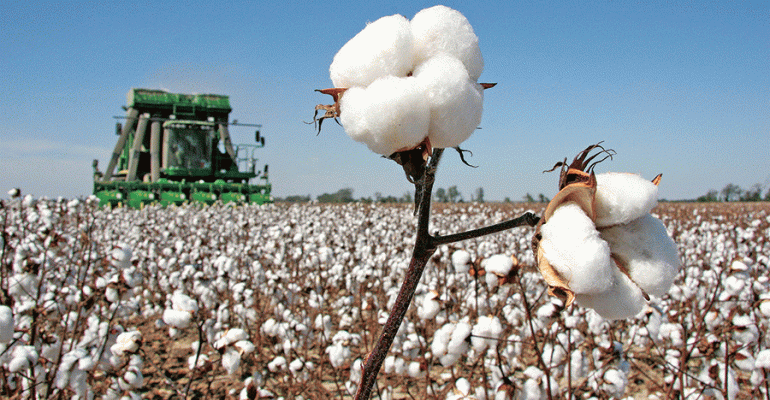National Cotton Council economists are pointing to a few key factors that will shape the U.S. cotton industry’s 2022 economic outlook.
This past year can be characterized as a year with significant uncertainty and volatility in the global economy and the world cotton market. The global economy recovered at a much faster pace than expected as COVID-19 restrictions were relaxed and world economies reopened. Strong world cotton demand has resulted in the highest cotton prices in a decade. However, the lingering effects of the COVID-19 pandemic’s shock to global trade have created an unprecedented level of stress and disruption on the entire supply chain, from transportation costs to labor availability.
Now, in the early weeks of 2022, the supply chain disruptions continue to affect the U.S. and world cotton market and the COVID-19 Omicron variant is creating disruptions in various parts of the world. Current economic projections for the U.S. and global economies should be viewed with caution given the continued impacts of the COVID-19 pandemic, rising energy prices, supply chain disruptions, geopolitical tensions, higher than expected inflation, and slowing economic growth.
In her analysis of the NCC Annual Planting Intentions survey results, Campiche said the NCC projects 2022 U.S. cotton acreage to be 12.0 million acres, 7.3 percent higher than 2021. Although cotton prices are higher than in recent years, higher input prices and supply chain disruptions have resulted in significant increase in production costs for 2022. Most producers are expecting a significant increase in input costs in 2022, largely due to higher fertilizer and chemical costs.
2022 harvest estimate
Based on the state-level 10-year average abandonment rates and five-year average yields, 2022 harvested area is estimated to be 9.8 million acres with an overall abandonment rate of 18.9 percent. U.S. production is estimated to be 17.3 million bales with an average yield of 850 pounds per acre, which includes 16.8 million upland bales and 438,000 extra-long staple bales.
Regarding domestic mill cotton use, the NCC is projecting an increase in U.S. mill use to 2.7 million bales during the 2022 crop year. As one of largest markets for U.S. cotton, U.S. mills continue to be critically important to the health of the cotton industry. In the face of rising textile imports from Asian suppliers, the U.S. textile industry has focused on new investment and technology adoption in order to remain competitive. Preserving important trading arrangements in the Western Hemisphere also is critical to the U.S. textile industry’s health.
U.S. exports for the 2021 marketing year currently are estimated at 13.8 million bales, which is 950,000 bales below the February 2022 USDA estimate. While U.S. export sales have been very strong thus far in the 2021 marketing year, weekly shipments are lagging well behind the five-year average pace. In addition to the disruptions and delays caused by transportation issues, cotton shipments in the early months of the 2021 marketing year suffered from a lack of available supply.
As of February 3, total commitments reached 13.0 million bales while 4.5 million bales had been shipped. Current shipments are 3.2 million bales behind last year and 1.1 million bales behind the five-year average. To reach 13.8 million bales in shipments by July 31, weekly shipments will need to average 370,000 bales which is slightly above the five-year average pace.
Ending stocks to increase
With fewer exports for the 2021 crop year, U.S. ending stocks are projected to increase to 4.4 million bales, or 1.2 million bales more than the previous year.
U.S. exports are projected to increase to 15.8 million bales in the 2022 marketing year. When combined with U.S. mill use, total offtake exceeds expected production, and ending stocks are projected to fall to 3.1 million bales. If realized, U.S. stocks represent one of the lowest levels in the last 20 years. World ending stocks are projected to decline by 3.4 million bales in the 2022 marketing year to 81.6 million bales, resulting in a stocks-to-use ratio of 64.8 percent.
A tighter U.S. balance sheet, supply chain disruptions, speculative money flow, overall increases in commodity prices, and strong demand are creating a bullish sentiment for cotton prices. However, additional restrictions related to the COVID-19 pandemic, a slow-down in world economic activity, and low man-made fiber prices could put downward pressure on cotton prices in 2022.
Additional details of the 2022 Cotton Economic Outlook are on the NCC’s website at http://www.cotton.org/econ/reports/annual-outlook.cfm.


